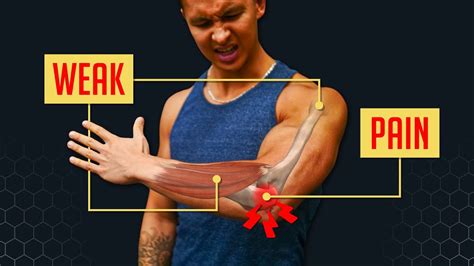Elbow Pain Relief: Back to Lifting Stronger
Elbow pain can be a debilitating setback for anyone, especially those who enjoy weightlifting and other strenuous activities. Whether you're experiencing golfer's elbow, tennis elbow, or general elbow discomfort, returning to your fitness routine safely and effectively requires a multifaceted approach. This article explores effective elbow pain relief strategies, helping you get back to lifting stronger and healthier than before.
What Causes Elbow Pain in Weightlifters?
Elbow pain in weightlifters is often caused by overuse, repetitive strain, and improper form. The muscles and tendons surrounding the elbow are frequently subjected to intense stress, leading to inflammation and injury. Specific conditions like:
- Lateral Epicondylitis (Tennis Elbow): Pain on the outside of the elbow, often caused by overuse of the wrist extensor muscles.
- Medial Epicondylitis (Golfer's Elbow): Pain on the inside of the elbow, resulting from overuse of the wrist flexor muscles.
- Ulnar Collateral Ligament (UCL) Injuries: Common in throwing athletes but can occur in weightlifters, particularly those performing heavy lifts with improper form.
- Tendinitis: Inflammation of the tendons surrounding the elbow joint.
- Bursitis: Inflammation of the bursae, fluid-filled sacs that cushion the elbow joint.
Understanding the root cause of your elbow pain is crucial for effective treatment.
How Can I Relieve Elbow Pain?
Relieving elbow pain requires a comprehensive strategy that addresses both the pain and the underlying cause.
1. Rest and Ice:
This is the cornerstone of initial treatment. Avoid activities that aggravate your elbow pain, allowing the injured tissues to heal. Apply ice packs for 15-20 minutes at a time, several times a day, to reduce inflammation.
2. Over-the-Counter Pain Relief:
Nonsteroidal anti-inflammatory drugs (NSAIDs) like ibuprofen or naproxen can help reduce pain and inflammation. Always follow the recommended dosage and consult your doctor or pharmacist if you have any concerns.
3. Physical Therapy:
A physical therapist can design a customized program of exercises to strengthen the muscles surrounding the elbow, improve flexibility, and restore range of motion. This is vital for long-term recovery and preventing future injuries.
4. Bracing or Support:
Elbow braces can provide support and reduce stress on the injured tendons, promoting healing. Your doctor or physical therapist can recommend the appropriate type of brace.
What Exercises Can I Do to Strengthen My Elbows?
Once the initial pain has subsided, targeted exercises can help strengthen the muscles supporting your elbow and prevent future injuries. Always consult your doctor or physical therapist before starting any new exercise program. Examples include:
- Wrist curls: Strengthen the wrist flexors and extensors.
- Grip strengthening exercises: Improve grip strength and forearm stability.
- Isometric exercises: Involve holding a position without movement, building muscle strength without joint strain.
- Eccentric exercises: Focus on the lengthening phase of a muscle contraction, strengthening the tendons.
How Long Does Elbow Pain Last?
The duration of elbow pain varies greatly depending on the severity of the injury and the effectiveness of treatment. Mild cases might resolve within a few weeks, while more severe injuries may require several months of rehabilitation.
Can I Still Lift Weights with Elbow Pain?
Lifting weights with elbow pain can worsen the injury if not approached carefully. It's crucial to modify your lifting routine, avoiding exercises that aggravate your pain. Focus on lighter weights, fewer repetitions, and perfect form. Listen to your body and stop if you feel any increase in pain.
What are the Best Stretches for Elbow Pain?
Stretching helps improve flexibility and reduce muscle tension, which can alleviate elbow pain. Examples include wrist stretches, forearm stretches, and triceps stretches. Again, consult your physical therapist for guidance on appropriate stretches for your specific condition.
How Can I Prevent Elbow Pain in the Future?
Preventing future elbow pain involves addressing the underlying causes:
- Proper lifting techniques: Learn and practice proper lifting form to minimize stress on the elbows.
- Warm-up and cool-down: Always warm up before lifting and cool down afterward to prepare your muscles and prevent injury.
- Progressive overload: Gradually increase the weight and intensity of your workouts to avoid overstraining your muscles and tendons.
- Regular stretching: Incorporate regular stretching into your routine to maintain flexibility and prevent muscle tightness.
By following these guidelines, you can effectively manage elbow pain, promote healing, and safely return to your lifting routine, stronger and healthier than before. Remember that patience and consistency are key to a successful recovery. Always consult a medical professional for diagnosis and treatment of any persistent pain.

